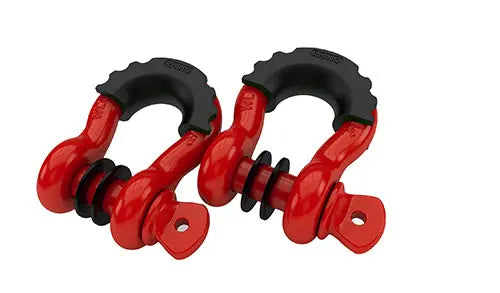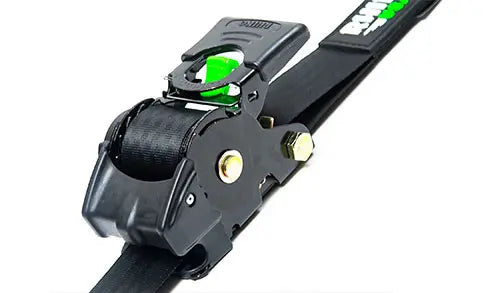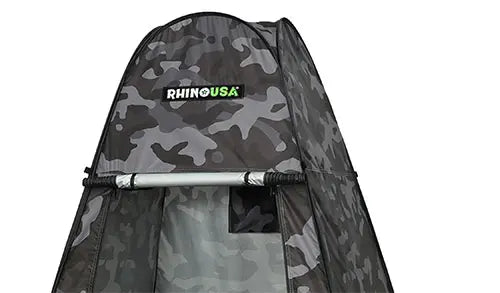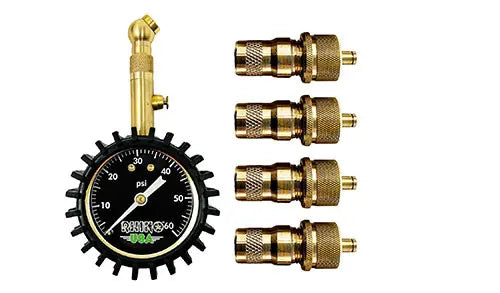
Where To Attach a Tow Strap Without Hooks
Choosing a tow strap
The idea that tow straps and recovery straps are one and the same is a dangerous misunderstanding. The difference between a tow strap and a recovery strap is that a tow strap is used for slowly moving a disabled vehicle - but not one that is stuck - from one point to another, while a recovery strap is used for pulling and dragging vehicles out of places that are difficult to get out of. It is okay to use a tow strap if you are in a working car and you are slowly pulling another vehicle down the road to a nearby repair shop.
However, if you are trying to free a 4x4 that is stuck in a ditch, you should not use a tow strap with hooks but rather a recovery strap. This is because the hooks could be dangerous. Consider Rhino USA's Recovery Tow Strap, the industry gold standard for vehicle recovery.
Rhino USA Recovery Tow strap
The Rhino USA Recovery tow strap is an ideal solution. It has a break strength of 31,518 pounds, as determined by lab testing, and triple-reinforced loop ends for added peace of mind. It also comes with heavy duty protective sleeves and a heavy-duty drawstring bag to keep it in - perfect for keeping your vehicle organized!

The dangers of using a tow strap with hooks
A tow hook on tow straps is dangerous. While they are still sold, there have been plenty of accidents involving them and we recommend not using them.
As a general rule of thumb, tow straps that come with hooks do not include latches in their design. Even though a hook is equipped with a safety latch, the latch can become damaged and stop working properly.
MUST READ: 5 Ways a Tow With Hooks Strap Can Kill You
Tow hooks can become loose and fall off
It is possible for the hook to move to a different spot or just be positioned in such a manner that it will become loose and fall off after it has been subjected to a significant amount of force while you are repositioning your rig in preparation for a draw. When this happens, the hook transforms into a missile that has the potential to kill or damage anybody in its path, no matter how slow you are going.
Not as secure as you may think
They also give a false sense of security. Tow straps with hooks are NOT secure, due to the fact that a hook has an opening which would allow for a change in angle to cause the tow strap to fly off. Tow straps with hooks are also not specifically designed for vehicle recovery, they are designed for towing a vehicle in a straight line at a constant speed.
What is the alternative? How do you fix a tow strap without a tow hook?
So, if using a tow strap with a tow hook to move cars is dangerous, how can you pull the vehicle safely and without tow hooks?
The simple answer is to use the Rhino USA shackle hitch receiver. The shackle hitch receiver has a break strength that is greater than 41,000 pounds, and it is designed with a d-ring-shaped connection point so that you may attach your recovery tow strap or kinetic rope to it. This is the best way to be secure and pull the vehicle safely. They are also easy to use.
To use one, you need only unscrew the pin, loop your tow strap through the ring, and then simultaneously screw the pin into the recovery point and the shackle. If you have a winch that has a hook attached to the end of it, you can easily loop the hook through the D-ring. In some cases, you will not even need to remove the D-ring from the tow point.
Featured Product: Rhino USA Shackle Hitch Receiver
Make yourself visible to others
When you recover your vehicle from traffic, you should take precautions. It's a good start to have your safety equipment on you. Consider a plastic reflective triangle to alert any other vehicle of the recovery.
Inspect equipment and put them away safely
Check your recovery tow strap or tow rope and shackle hitch receiver carefully afterward. When you get home wash the straps and put them back into the handy drawstring bag that comes with it. This will ensure they are secure for next time you come to need them.
As always, we hope you enjoyed reading about where to attach a tow strap without hooks, and we sincerely hope that you never use a tow strap with hooks due to the dangers. Make sure to check out Rhino USA for industry-leading recovery gear and off-road accessories!
 FAQ's
FAQ's
What is the difference between a tow strap and a recovery strap?
Above, we mentioned that a tow strap and a recovery strap are two different things, with different purposes and that knowing which one you need is important. But how, and why, are they different?
The degree of "give" that each type of strap possesses is what differentiates a tow strap from a recovery strap as the primary differentiator between the two types of straps. Because tow straps have very little or no elasticity, they are the ideal material for use in towing automobiles. Because a tow strap does not have any "give" it should not be used to pull a car that is stuck in mud, snow. or whatever it is trapped in. This could cause the vehicle to become damaged.
Tow straps nevertheless have their in recovery, of say, a broken down vehicle, despite the fact that they should not be utilized for forceful pulling of any kind. If you find yourself stuck and the only thing you have available to you is a tow strap, you can still try to free yourself using the tow strap. Simply attach one end of the strap to a certified recovery point on each of the vehicles, gradually remove any slack from the other end of the strap, and pull.
Recovery straps, in contrast to tow straps, are elastic in nature. One of the factors that contribute to the effectiveness of recovery straps is the amount of kinetic energy that can be generated by the strap. In a circumstance where recovery is necessary, the elasticity of the strap causes the strap to immediately return to its initial length.
Recovery straps have far more "give" which enables the driver to obtain a head start when compared to tow straps, which require the driver to release all of the slack in the strap before pulling. Because of a few different factors, this strategy is significantly more useful when applied in a situation involving recovery.
When the strap has been stretched as far as it can go, it will automatically return to its normal length, pulling the vehicle out of the sticky situation along with it.
- Choosing a selection results in a full page refresh.








